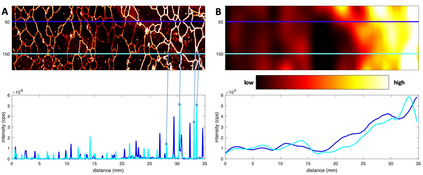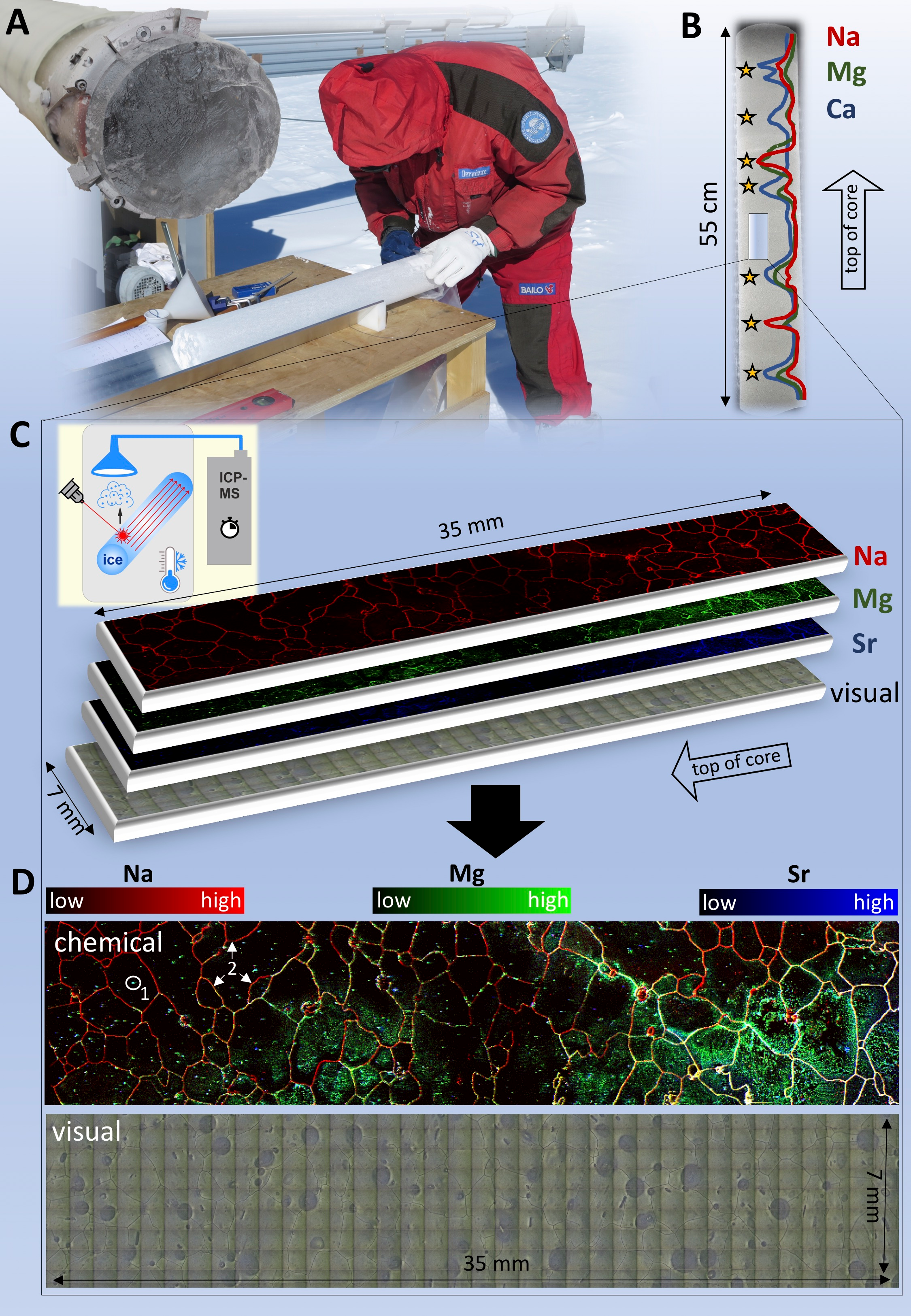Polar ice cores play a central role in studies of the earth's climate system through natural archives. A pressing issue is the analysis of the oldest, highly thinned ice core sections, where the identification of paleoclimate signals is particularly challenging. For this, state-of-the-art imaging by laser-ablation inductively-coupled plasma mass spectrometry (LA-ICP-MS) has the potential to be revolutionary due to its combination of micron-scale 2D chemical information with visual features. However, the quantitative study of record preservation in chemical images raises new questions that call for the expertise of the computer vision community. To illustrate this new inter-disciplinary frontier, we describe a selected set of key questions. One critical task is to assess the paleoclimate significance of single line profiles along the main core axis, which we show is a scale-dependent problem for which advanced image analysis methods are critical. Another important issue is the evaluation of post-depositional layer changes, for which the chemical images provide rich information. Accordingly, the time is ripe to begin an intensified exchange among the two scientific communities of computer vision and ice core science. The collaborative building of a new framework for investigating high-resolution chemical images with automated image analysis techniques will also benefit the already wide-spread application of LA-ICP-MS chemical imaging in the geosciences.
翻译:极地冰芯在通过自然档案对地球气候系统进行研究方面发挥着核心作用。一个紧迫的问题是分析古老的、高度薄薄的冰芯核心部分,其中确定古气候信号特别具有挑战性。对于这个问题,通过激光摄取、导导导相合等离子质谱仪(LA-ICP-MS)进行的最新艺术成像具有革命性的潜力,因为它结合了微型2D级化学信息和视觉特征。然而,对化学图像保存记录的定量研究提出了需要计算机视觉界专门知识的新问题。为了说明这个新的跨学科前沿,我们描述了一组选定的关键问题。一项关键任务是评估主要核心轴沿线单一线谱的古气候重要性,我们所展示的是,一个取决于规模的问题,而先进的图像分析方法至关重要。另一个重要问题是评估后层层变化,化学图像提供了丰富的信息。因此,现在时机已经成熟,可以开始两个科学界之间加紧交流计算机视觉和冰芯核心科学领域的新科技界间的新问题了。一个合作性化化化化图分析框架将随着高分辨率的不断发展而进行。







